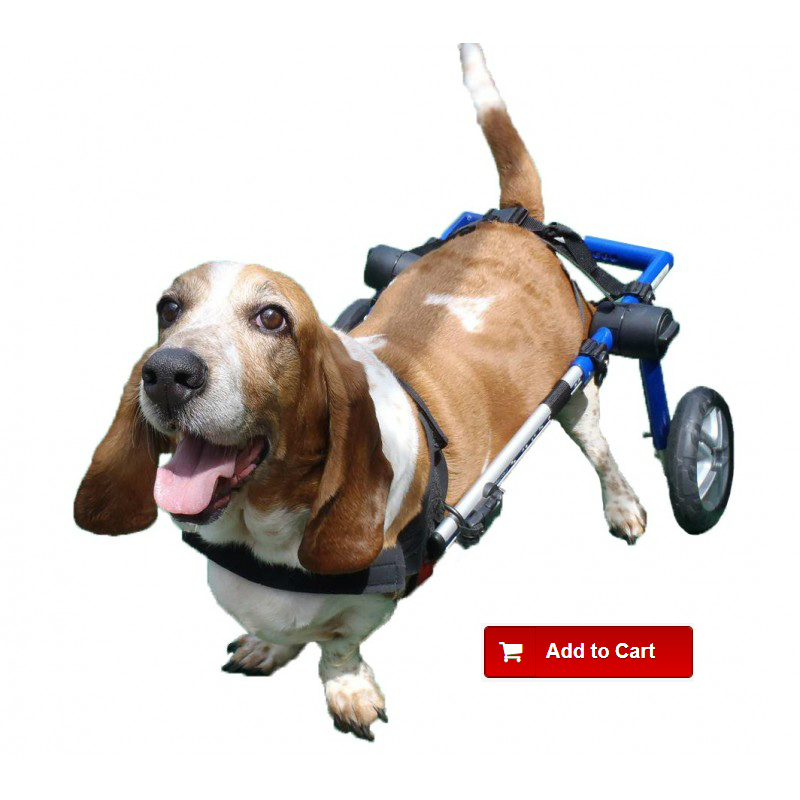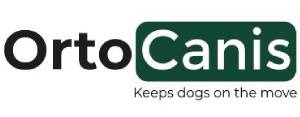Help for dogs with hip dysplasia
Introduction
Hip Dysplasia is the most common osteoarticular disease in dogs. It typically occurs in large and medium size dogs breeds and is less common in small breeds.
Hip dysplasia occurs when the femoral head (ball) becomes dislocated, ie outside its natural place within the hip socket (acetabulum). 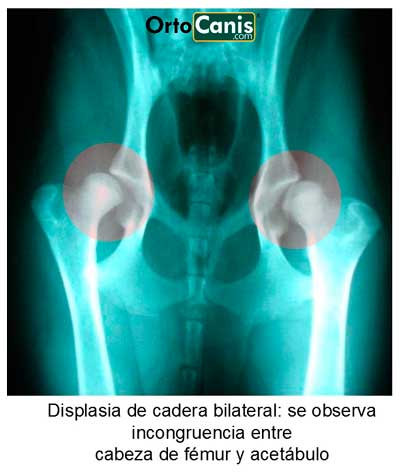 By not being contained by the hip socket, the femoral head moves and causes stress to the area, inflaming and weakening the joint and periarticular tissues.
By not being contained by the hip socket, the femoral head moves and causes stress to the area, inflaming and weakening the joint and periarticular tissues.
Frequently, degenerative changes of osteoarthrosis appear due to the problems caused by dysplasia. The painful inflammation makes the dog change how they distribute their weight and therefore use the affected area less, which can later cause muscular atrophy.
Symptoms
Symptoms vary somewhat depending on the breed and especially the age of the dog. For this reason, X-Rays are often needed to diagnose dysplasia.This is normally carried out with the dog facing upwards while an image is taken of the soft tissue traction of both hindlegs. Usually, dogs are anesthetised or heavily sedated. It is also important to note that the symptoms do not always correlate with the X-ray result.
Sometimes, X-rays can show very dysplastic results even if the dog has little pain, just as it is possible that a dog has severe pain but the results show a less serious form of dysplasia. The severity of the pain depends more on joint inflammation (synovitis) and other factors than the dysplasia itself.
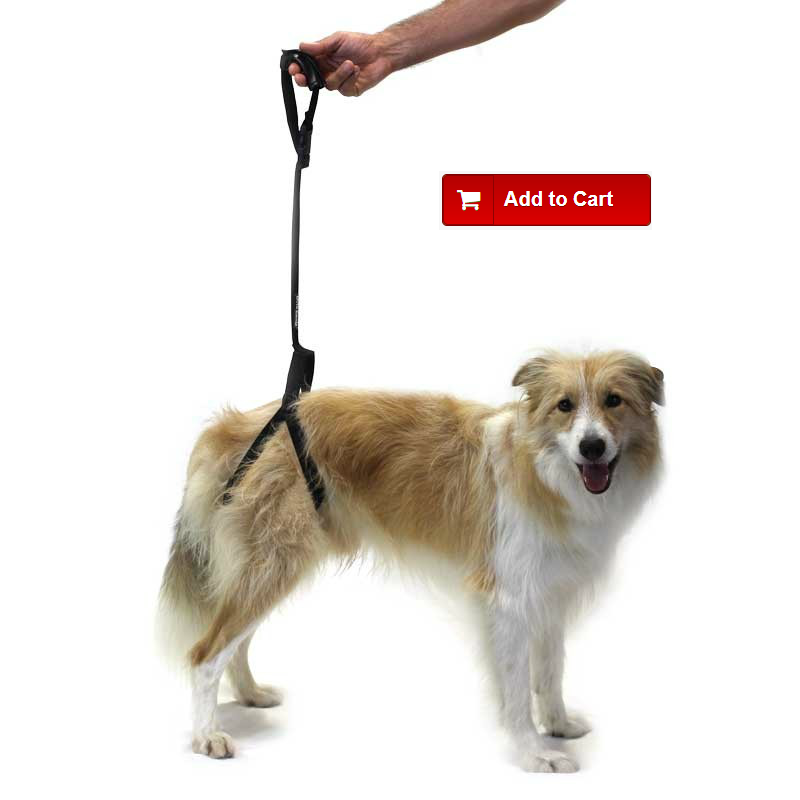 Symptoms of dysplasia appear starting at 5 or 6 months. Symptoms can include not distributing the weight equally across their limbs, difficulty standing, regular slips or falls or sudden changes in mood - aggression, unwillingness to go for walks, changes in playfulness or affection. Sometimes, when a dog reaches full size, most symptoms can disappear leaving only a limp as a clear sign.
Symptoms of dysplasia appear starting at 5 or 6 months. Symptoms can include not distributing the weight equally across their limbs, difficulty standing, regular slips or falls or sudden changes in mood - aggression, unwillingness to go for walks, changes in playfulness or affection. Sometimes, when a dog reaches full size, most symptoms can disappear leaving only a limp as a clear sign.
Hip dysplasia is hereditary but often dogs who carry the genes do not develop hip dysplasia. There are also environmental factors such as rapid growth and nutrition which have as much to do with dysplasia as genetics. It's normal that dogs without dysplasia have offspring that do, or vice versa, however due to the high risk of passing the disease on to descendents, an affected animal should not be made to reproduce.
Prevention
Being overweight and having an unbalanced diet are factors that have proven to increase the chances of developing the disease. The most critical developmental period of the disease is between 3 and 8 months. A lower calorie diet and regular, low impact exercise are ways to help prevent hip dysplasia.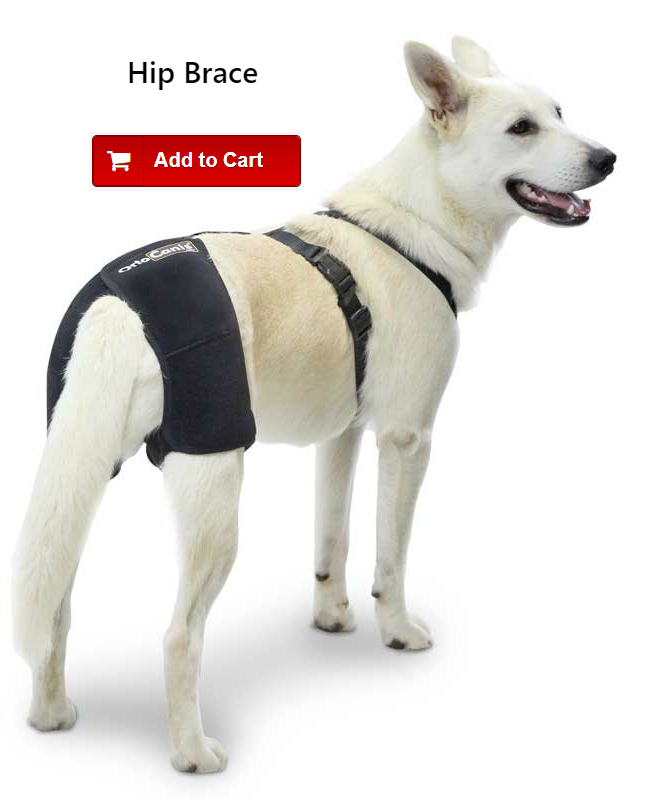
In older dogs, problems occur as a result of osteoarthritis. The most typical symptoms are difficulty getting up, limping, putting more weight on the forelimbs when walking, visible difficulty climbing stairs, getting into the car or jumping on the couch. In the picture, we can see the typical position that a dog with hip osteoarthritis adopts - legs splayed to increase the support base and head forward to carry more weight in the front - this will cause muscle atrophy as it persists over time.
Some dogs are only able to walk for short distances and suffer more in the morning if they have not had a comfortable, proper rest. Normally, the dog's limbs are flexed while walking and they will take short steps as it is painful to use the full mobility of the hips. Dogs can also show a very significant loss of muscle mass in the posterior region (atrophy). The amount of time a dog can go on walks for is largely reduced - instead, the dog sits or lies down and does not want to go for a walk.
Although there are various classifications, this International Canine Federation classification is based on:
- No signs of dysplasia.
- Near normal hip joints.
- Mild dysplasia.
- Moderate or average.
- Severe.
Treatment
Although there are surgical methods such as excision of the pectineus muscle, triple pelvic ostetomy, femoral head arthroplasty or hip replacements, in the end treatment is purely remedial. Pharmacology methods include anti inflammatory medicine and preventative medicine. Weight reduction, moderate regular exercise and physical therapy can really help build muscle to help remove remove tensions and eliminate overcompensation. Improvements in the living environment can also help, such as sleeping on a good mattress like a mattress for older dogs, keeping warm, and therapies such as acupuncture, massage or reiki.
We have many ways to help dogs with hip dysplasia. Regular, physical exercise
can help to improve muscle mass that can better support poor weight distribution. Physiotherapy and massages help to restore proper muscle condition. The preventative medicine helps to delay the onset of osteoarthritis and to prevent or reduce the inflammatory pain.
We also recommend keeping your dog warm with thermal blankets and, if the dog needs help getting up, we can use a rear support harness. It is important that the dog is comfortable and that we help them to move and exercise.
Discover more aids for dogs with hip dysplasia at www.ortocanis.com
You may also enjoy this other article on hip dysplasia

